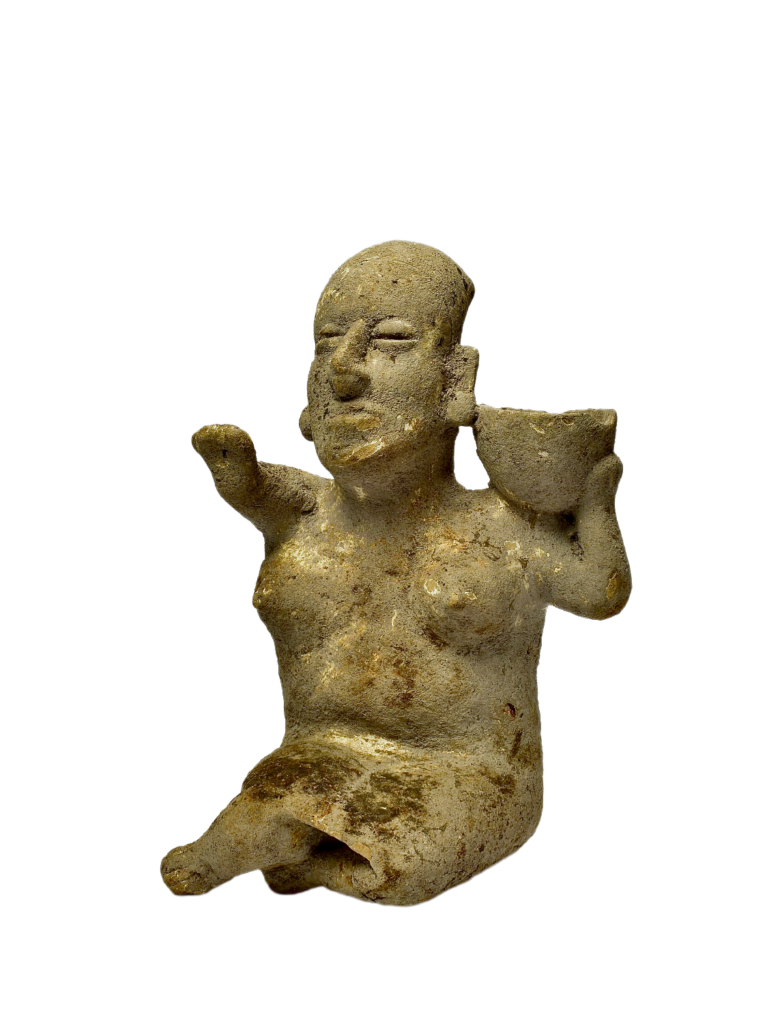Fascinating Pre-columbian Mesoamerican Ancient Burial Practices
Mesoamerican cultures before European contact developed burial practices that reflected their spiritual beliefs, cosmology, and social hierarchies. By examining these burial customs, we gain insight into how the living connected with the dead and the afterlife and the significance of the objects placed with the deceased. These items symbolized the spiritual journey and served practical functions for the dead in their transition to the afterlife.
Maya Burial Practices
The Maya civilization, which thrived from 250 to 900 AD, possessed a complex understanding of death and the afterlife. The Maya believed in a cyclical journey, where death was seen as a passage to Xibalba, the underworld before the soul could achieve the rebirth or cosmic reintegration. To aid this journey, the Maya placed carefully chosen items in tombs, including jade, ceramics, and personal belongings.
Artifacts and Symbolism: Jade, especially in necklaces, ear spools, and pendants, was crucial in Maya burials. It symbolized life, fertility, and divine authority. The quantity and quality of jade reflected the deceased’s social status, and its placement was believed to protect and guide the soul. Often painted with mythological or cosmological scenes, pottery was included to nourish the soul on its journey. These vessels sometimes depicted deities or stories connected to the sun’s rebirth, reinforcing the Maya belief in life’s cyclical nature.
Burial Orientation and Locations: Maya burials were aligned with the cardinal directions, particularly the north and east. The north represented death and the ancestors, while the east symbolized the sun’s rebirth. Elite Maya individuals, such as kings and priests, were often interred in ceremonial centers or beneath pyramids, structures that symbolized mountains and the path to divinity. The tombs were decorated with murals and hieroglyphs documenting the deceased’s achievements and continued influence in the afterlife.
Aztec Burial Customs
The Aztecs, who rose to power in the 14th century in central Mexico, practiced various burial rites depending on the individual’s status and cause of death. They believed the soul’s afterlife relies heavily on how the person died, with the bravest warriors, for example, destined to join the sun god Huitzilopochtli.
Cremation and Funerary Urns: Aztec elites and warriors were often cremated, and their ashes were placed in ornately decorated urns. These urns usually depicted deities such as Mictlantecuhtli, the god of the underworld, and guided the soul through the stages of the underworld to its final destination. For those who died in battle or childbirth, the highest honor was joining the sun’s eternal cycle, while others faced the journey through Mictlan, a nine-stage underworld.
Artifacts for the Afterlife: Warriors were buried with weapons like obsidian blades and atlatls, symbolizing their continued role as protectors in the afterlife. These items ensured the deceased could defend themselves and assist the gods in spiritual warfare. Other burial items included food, drink, and figurines of deities, all intended to support the soul during its journey.
Zapotec and Mixtec Burial Traditions
In the region of Oaxaca, the Zapotec and Mixtec civilizations crafted highly artistic burial practices that focused on ancestral lineage and divine connection.
Zapotec Funerary Urns: The Zapotecs created urns that frequently depicted gods such as Cocijo, the rain god. These urns were placed alongside the deceased, particularly in elite burials, and acted as protectors in the afterlife. Zapotec tombs were often constructed with great care, featuring murals and carvings that illustrated the deceased’s noble lineage and their connection to divine forces. The urns, typically large and elaborate, were central to Zapotec funerary customs.
Mixtec Gold and Ancestry: The Mixtecs, known for their remarkable metalwork, often buried their elites with gold jewelry, figurines, and other objects that denoted status and divine favor. These items were crafted with precision, emphasizing their belief in the importance of wealth and art in ensuring a peaceful and honorable transition to the afterlife. Mixtec tombs were sometimes decorated with codices and murals highlighting the deceased’s ancestral lineage, reinforcing the importance of family and legacy in Mixtec culture.
Jalisco Culture and Shaft Tombs
The Jalisco culture, located in the western highlands of Mexico, practiced unique burial customs involving deep shaft tombs. These tombs, sometimes reaching depths of over 15 meters, housed family members and elites.
Burial Practices: Ceramic figures, including representations of the deceased and deities, were placed in these tombs to accompany the dead into the afterlife. The figures were often highly detailed and depicted everyday activities, symbolizing the continuation of life beyond death. This practice reflected the Jalisco belief that the soul’s journey to the afterlife required the protection and assistance of these figures, which also served to commemorate the individual’s role within the community.
South American Comparisons
South American cultures, like the Inca and Moche, practiced different but equally elaborate burial customs. These cultures focused more on preserving the physical body, which was significant in maintaining the deceased’s influence over the living.
Inca Burial Practices: The Inca mummified their rulers, wrapping them in textiles and placing them in chullpas or sacred caves. Mummies were often seated in a fetal position and surrounded by offerings such as food, textiles, and personal belongings. The mummified rulers continued to play an essential role in Inca society, with their descendants consulting them on important decisions. Unlike Mesoamerican burials, Inca practices emphasized preserving the body for ongoing spiritual and political authority.
Moche Burials: The Moche, located along Peru’s northern coast, buried their elites in elaborate tombs filled with gold, ceramics, and metal ornaments. Their ceramic portrait vessels, which often depicted the deceased, were a hallmark of Moche burial art. These vessels were realistic and served a spiritual purpose, believed to capture the person’s essence. Moche burials focused heavily on commemorating individual achievements, contrasting with the Mesoamerican emphasis on the journey through the underworld.
Key Differences Between Mesoamerican and South American Burials
While Mesoamerican cultures emphasized the soul’s journey through the afterlife, often using burial items for protection and sustenance, South American cultures like the Inca prioritized maintaining the deceased’s social status and influence through preserving the body. In Mesoamerica, cremation and symbolic items were used daily, while South America favored mummification and elaborate tombs.
Conclusion
Mesoamerican and South American burial practices reveal distinct approaches to death, spirituality, and the afterlife. While both regions used burial rituals to honor the dead and connect with the divine, their methods reflected broader cultural values. Mesoamerican practices focused on the soul’s journey, often aided by ritual items, whereas South American customs emphasized preserving the body and social status. These differences highlight the diversity of pre-Columbian spiritual beliefs and their lasting impact on our understanding of ancient cultures.
Unveiling Ancient Secrets: Pre-Columbian Burials of South America
Research Academic Papers and News Articles

